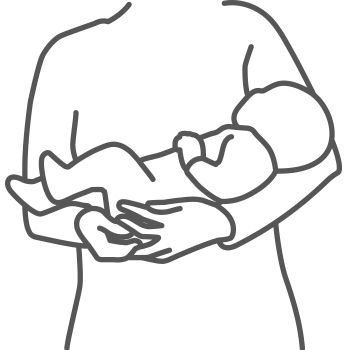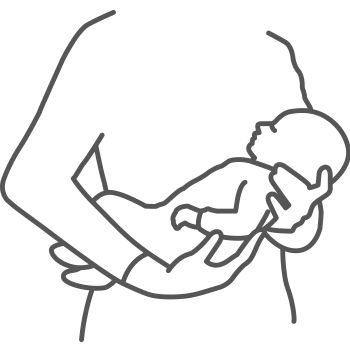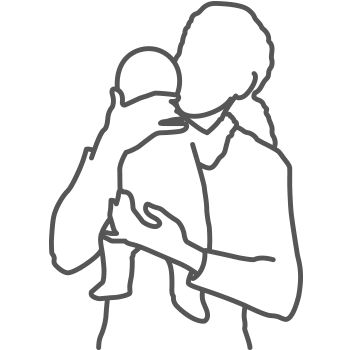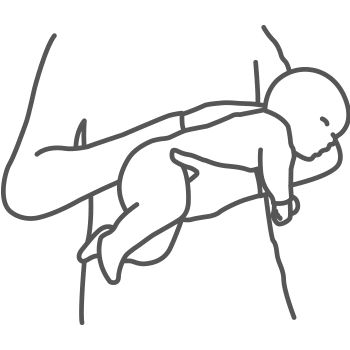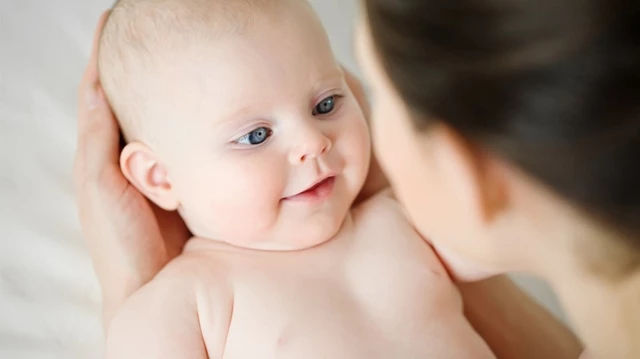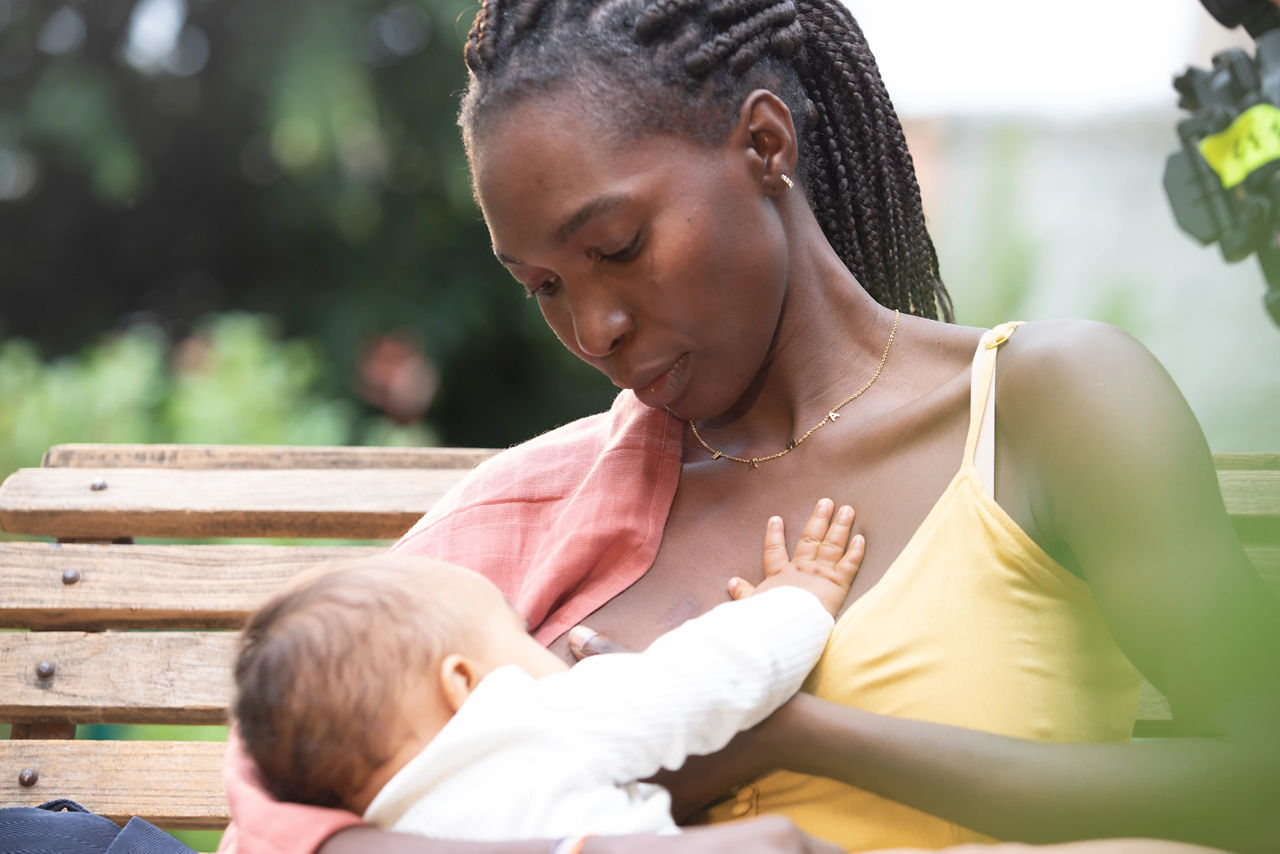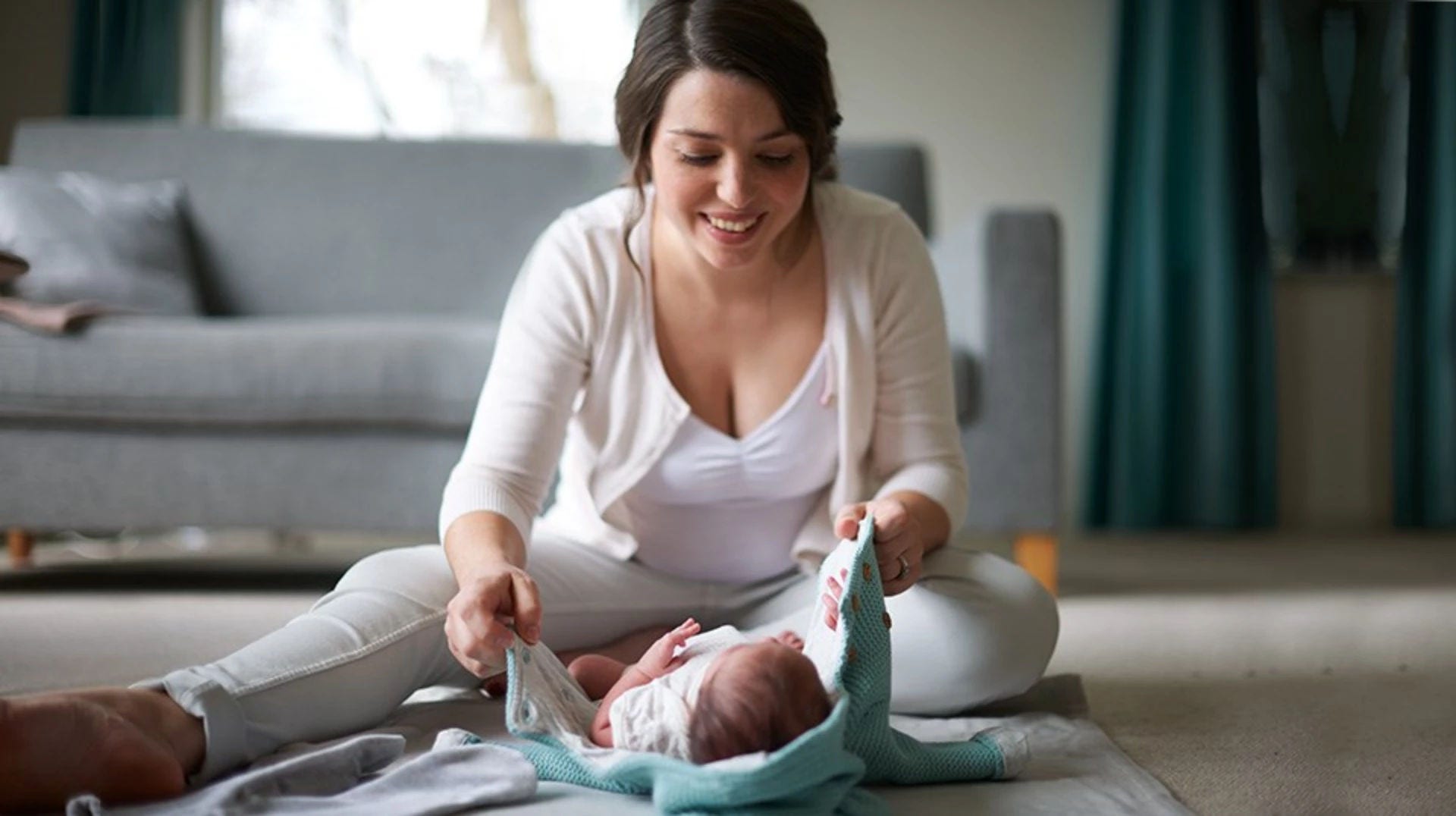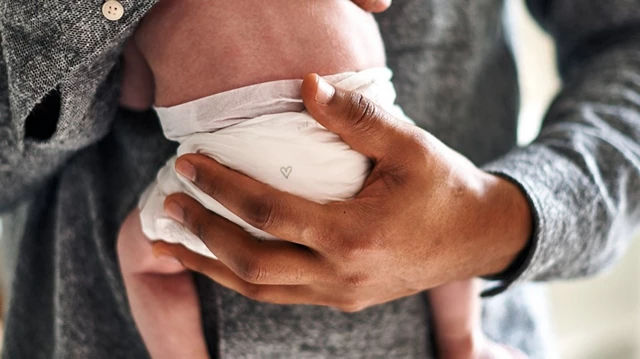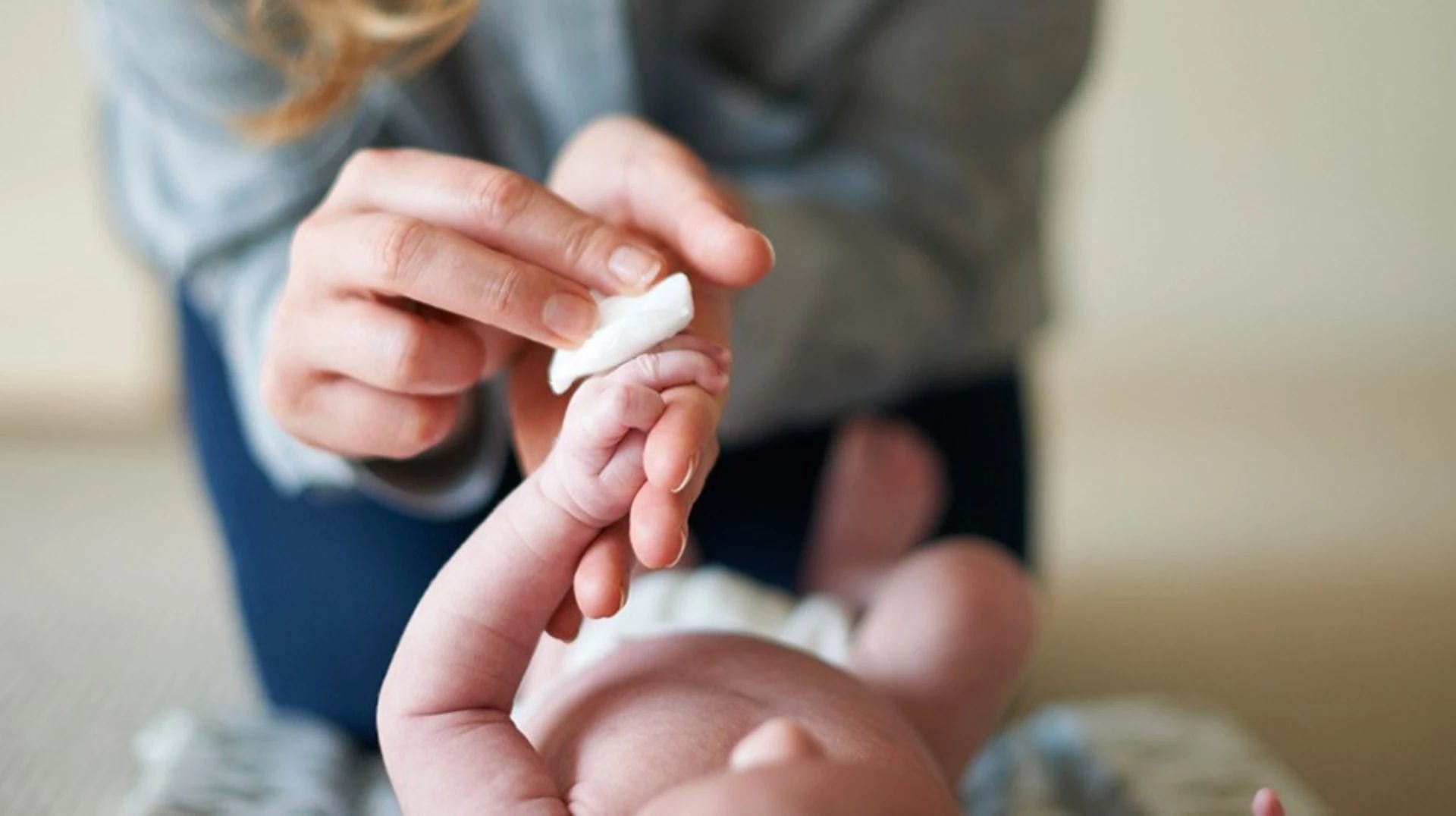Those first precious moments with your baby are intense – fuelled by a rush of hormones designed to promote bonding and a desire to protect. Meeting your newborn makes those nine months of pregnancy and the stress of labour all worthwhile. Skin-to-skin contact is a beautiful way to start bonding with your baby straight after birth, but don’t worry – not all mums feel an instant bond. Your love will grow with your baby.
Getting to know your baby
After the intensity of labour, meeting your newborn baby for the first time is an overwhelming experience. You’ll be relieved, proud, amazed and sore in equal measure. Thanks to a rush of oxytocin, the ‘love hormone’, you’ll also be head-over-heels in love. This article explains what to expect in the first few hours with your baby.
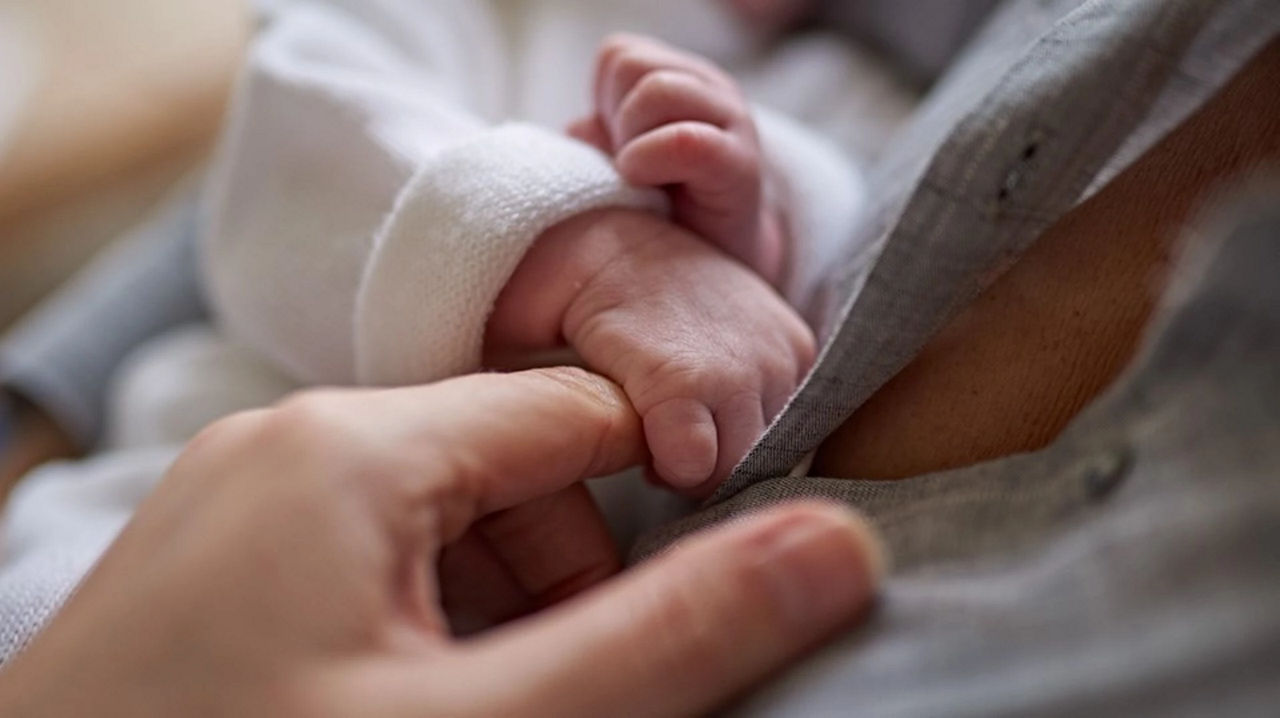
Love at first sight
First touch
As soon as possible after delivery, your midwife will place your newborn onto your chest1. This close contact allows you to gaze into your baby’s eyes, have a look at their features, and give them their very first comforting cuddle; all important steps in getting to know each other. As well as providing emotional benefits for both of you, incredibly this first embrace has many physical health benefits for your baby. It helps to regulate their body temperature, glucose levels and respiratory rate2 and the bacteria on your skin will kick-start their immune system by enabling the colonisation of your baby's skin with beneficial bacteria3. It also promotes their instinctive desire to breastfeed.
First feed
Soon after birth your baby will try to find your breast to feed from, turning their head towards the smell of your milk and opening their mouth if something touches their lip4. Latching on and sucking may take a bit more practice, but your midwife should be on hand to help you both.
The first few days of breastfeeding are the most important, as your baby reaps the benefits of ‘colostrum’. This thick, yellow substance is the first milk you produce. It provides all the nutrients your baby needs in a highly concentrated form. As your baby’s tummy is about the size of a marble, they only need a few teaspoons a day5, but this amazing milk provides an array of benefits:
- It’s the perfect food – easily digestible, with all the protein, fat and vitamins your baby needs
- It passes on your antibodies and friendly bacteria to start building their immune system and a healthy gut
- It’s a laxative that helps clear your baby's bowels of meconium6
Breastfeeding ‘on demand’ will help you to produce all the milk your baby needs. It also stimulates contractions, which will shrink your uterus and help to prevent excessive blood loss. It’s not always easy to get breastfeeding right the first time, so make sure you take advantage of all the help your midwife can offer in the early days.
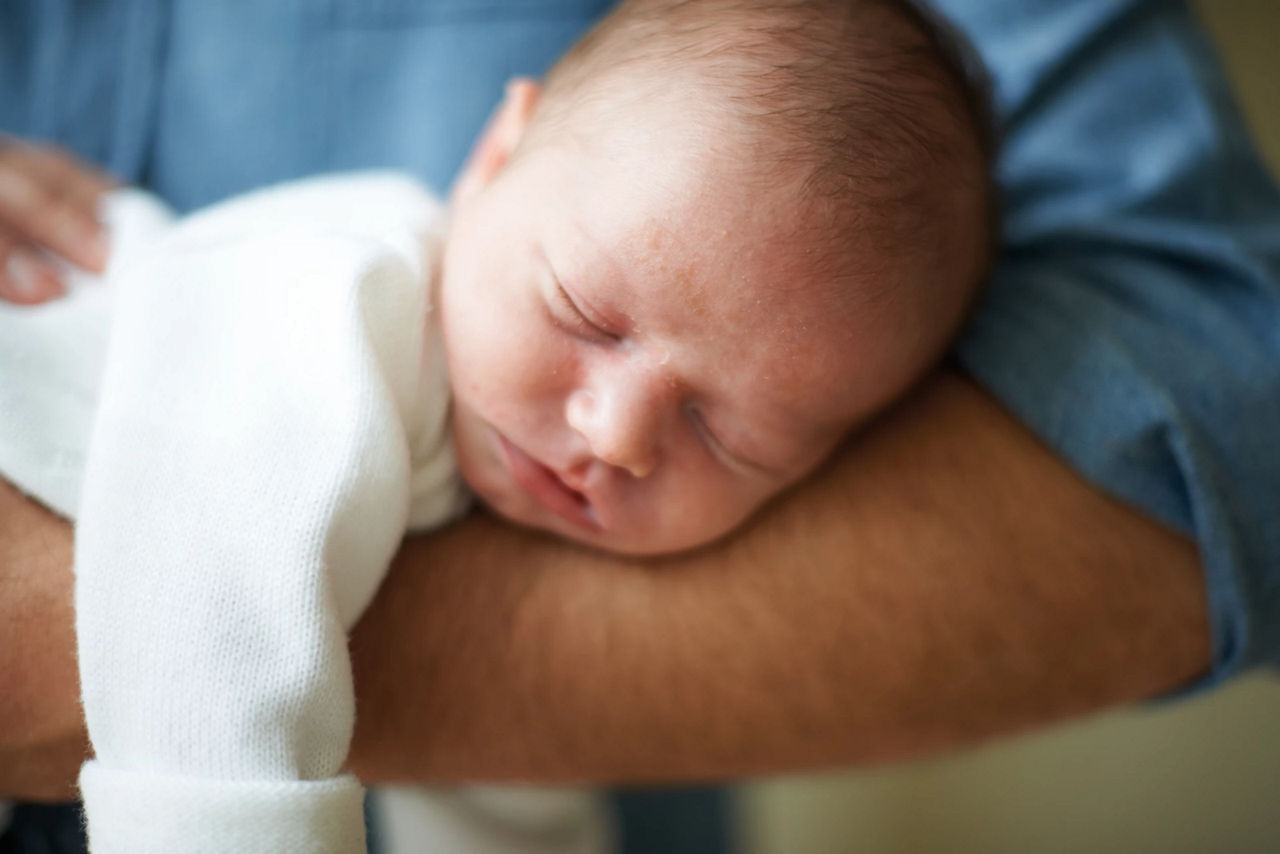
Skin-to-skin contact is a beautiful way to start building the bond straight after birth
First checks
It’s reassuring to know that within the first 72 hours of your baby’s life they should be closely examined to ensure they’re healthy. The first check, carried out in the first few minutes of life, is called an Apgar score. It helps your midwife or doctor to decide if your baby needs immediate medical help, by assessing things like skin colour, heart rate and reflexes. It is not used as an indicator of longer term health issues, and if your baby is otherwise healthy, there’s no need to worry about a low Apgar score.
Other postnatal checks include eye health, ears, heart, hips and testes for boys. Hearing is checked by making clicking noises in your baby’s ear and listening for an echo. It’s painless and often done while your baby’s sleeping. You baby will also have a ‘heel prick’ test when they are 5–8 days old. A blood sample is taken from their heel and tested for metabolic disorders like phenylketonuria (PKU), MCADD, cystic fibrosis, sickle cell and congenital hypothyroidism.
Weight is also carefully monitored. Although it’s normal for a baby to lose weight in their first week of life, your health visitor or midwife will monitor their weight to make sure everything is ok.
What – or who – will my baby look like?
You’re probably itching to find out if your baby takes after you or their dad, or has their great aunt’s nose, but the reality is that your newborn may look a little strange at first. Their head will appear to be disproportionately large, and their hands and feet might be dark-blue or purple until their circulation gets going. How they are delivered may temporarily alter their head shape, and whether they are early or late arrivals will also impact their appearance. There’s also the plastic clamp on the stump of the remains of their umbilical cord.
Skin
Premature babies tend to have slightly more translucent skin and are usually covered in vernix, a waxy, white substance that helps protect their skin in the womb. Babies born later may have less vernix and more dry skin. Baby acne, also known as ‘milk spots’, can appear on your baby’s skin at any time. Completely harmless, they’re caused by your hormones and usually disappear within a few weeks.
Head
To help your baby through the birth canal, your baby’s skull bones are not fused together, so their head can look elongated after birth. Your baby’s head has two soft spots, or fontanelles: a diamond-shaped one at the front, and a smaller one at the back. These soft spots are covered by a thick, protective membrane and the skull will fuse together between 1 year and 18 months7.
Hair
Babies come with all sorts of hairstyles, from a thick mop to delicate, silky locks. Their hair colour and thickness are likely to change over the next few weeks or even years. It’s even totally normal for the hair they’re born with to fall out. If your baby arrives early, they may have more lanugo (the fine, downy hair that covers their body in the womb) than if they are born after their due date8.
Eyes
Like their hair, your baby’s eye colour can take a few months to settle. Amazingly they will see things in fuzzy black and white at first and are unable to see shapes beyond 20cm – just far enough to be able to see your face as you breastfeed.
Don’t panic if you see your baby’s eyes rolling away from each other now and again. This is called a squint and should resolve itself by around 3 months of age7.
Face
At first they might look quite scrunched-up, but their face will soon relax and soften.
Genitals
A flood of hormones in your baby’s body can cause their genitals to appear swollen and red. Baby girls often bleed slightly or have white, cloudy discharge from their vaginas. A boy’s testicles develop in his abdomen during pregnancy, before moving down into his scrotum in late pregnancy. For some baby boys, this happens after birth, and it can take three to six months9.
Umbilical cord care
You may be surprised to learn that your newborn has a 2–3cm stump of umbilical cord remaining on their tummy, often secured by a plastic clamp or tie. It has no nerve endings, so your baby can’t feel a thing, and all you need to do is to keep it clean for a week or so until it drops off. Don’t feel tempted to pull it off; let it come away naturally. Your midwife or health visitor will check the stump regularly for infection, but talk to them if you have any concerns.
How to hold a newborn
Picking up and holding a newborn can be quite daunting at first. They’re so precious and tiny. The main thing to remember is to support your baby’s head at all times. Apart from that it’s about finding a way that’s comfortable for both of you. Why not try these common holds10?
Next steps
- If you have any queries or concerns about your newborn, or your own health and well-being, make sure you speak to your midwife.
- It’s important you get time to rest and bond with your baby in the early days. Get your partner to manage visitors, so you don’t get overwhelmed.
- You’re probably going to feel quite sore at first, so ask for help when you need it and take it easy. It’ll help you to recover quicker.
- Breastfeeding is the most important skill you can master in the early days. Your midwife will have tonnes of tips on techniques to make it easier; make the most of their help while you can.
related articles
Learn more about your baby

Get in touch with our Careline experts
Our nutritionists and feeding advisors are always on hand to talk about feeding your baby. So if you have a question, just get in touch
1. NHS. Breastfeeding first days: Skin-to-skin contact [Online]. 2016. Available at: http://www.nhs.uk/Conditions/pregnancy-and-baby/Pages/breastfeeding-first-days.aspx#skin [Accessed March 2017]
2. Phillips R. Uninterrupted skin-to-skin contact immediately after birth. Newborn Infant Nurs Rev 2013;13(2):67-72.
3. Romano-Keeler J, Weitkamp JH. Maternal influences on fetal microbial colonization and immune development. Pediatr Res 2015;77(0):189-95.
4. NHS. Breastfeeding: Positioning and attachment [Online]. 2016. Available at: http://www.nhs.uk/Conditions/pregnancy-and-baby/Pages/breastfeeding-positioning-attachment.aspx [Accessed March 2017]
5. NHS. Breastfeeding: The first few days [Online]. 2016. Available at: http://www.nhs.uk/Conditions/pregnancy-and-baby/Pages/breastfeeding-first-days.aspx [Accessed March 2017]
6. Ballard O, Morrow AL. Human milk composition: Nutrients and bioactive factors. Pediatr Clin North Am 2013;60(1):49-74.
7. NHS. Getting to know your newborn [Online]. 2015. Available at: http://www.nhs.uk/conditions/pregnancyand-baby/pages/your-baby-after-birth.aspx [Accessed March 2017]
8. NHS. You and your baby at 37-40 weeks pregnant [Online]. 2015. Available at: http://www.nhs.uk/conditions/pregnancy-and-baby/pages/pregnancy-weeks-37-38-39-40.aspx [Accessed March 2017]
9. NHS. Undescended testicles [Online]. 2015. Available at: http://www.nhs.uk/Conditions/undescendedtesticles/Pages/Introduction.aspx [Accessed March 2017]
10. NHS. What’s the best way to hold a newborn baby? [Online]. 2014. Available at: http://www.nhs.uk/video/Pages/what-is-the-best-way-to-hold-a-newborn-baby.aspx [Accessed March 2017]
Last reviewed: 28th March 2017
